28 February 2014. Dundas, Ontario. I’d been hearing of various places around town where lots of birds may still be seen, mostly waterfowl, so I decided to visit half a dozen sites with open water and see for myself. Under winter conditions such as ours this year, there are few spots where open water remains unfrozen. I could show you a couple of quite enchanting fresh-water springs where the water flows year-round at a steady temperature of about 5 deg, C.; or there’s the dynamic bodies of water like Lake Ontario or the Niagara River which are far too busy to have time to freeze. But at the other end of the spectrum, there are unfrozen places close to sewage outfalls and they seem to be particularly appealing to waterfowl.
My first stop was at the remnants of a 19th century canal which at one time was the absolute limit of access by water from the Atlantic and Lower Canada into southwestern Ontario. This historic artifact is now distinguished as the discharge point for a tertiary sewage treatment plant, an irony deserving much further comment; but enough for now. Today it’s a happy (and perhaps delicious) wintering place for ducks, geese and swans.
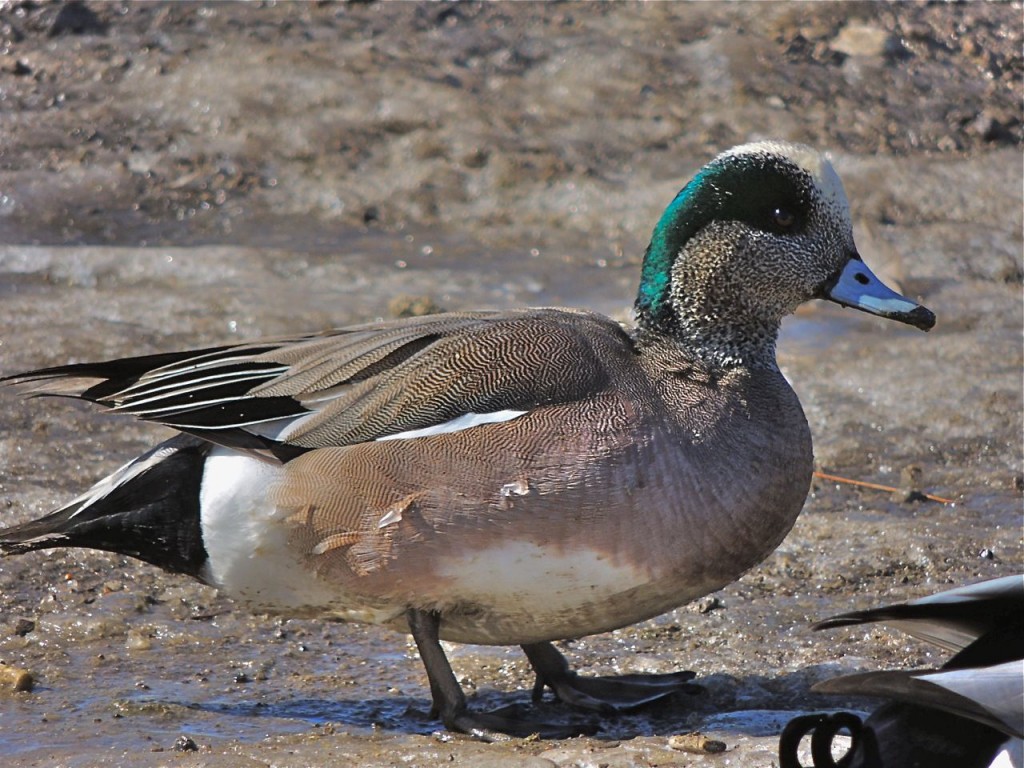
Upon my arrival I was pleased to see an American Wigeon among a large gang of Mallards and Canada Geese all picking at the rutted mud of the parking area in hopes of sorting out something edible. I managed to get a number of photos of the wigeon before it hastened back to the water, but feeling sorry for it and hoping that maybe I’d help it get through the winter, I fetched a small bag of bird seed from my car. Well, by the time I scattered the seed about, the wigeon was nowhere to be seen; instead my generosity was appreciated by dozens of Canada Geese. They came in from every direction, many of them flying across the road causing several near misses with passing trucks. I could imagine the swearing and eye-rolling and was rather embarrassed at having unwittingly caused such havoc and ; so I left to buy some cheese.
On my return the chaos had passed and I was able to take more time appreciating what it means to spend your winter days on or near ice. I found a pair of Hooded Mergansers and thought for a while that the male for all his colour and splendour would look pretty good as Christmas ornament; he’d be no more preposterous than much of contemporary iconography.
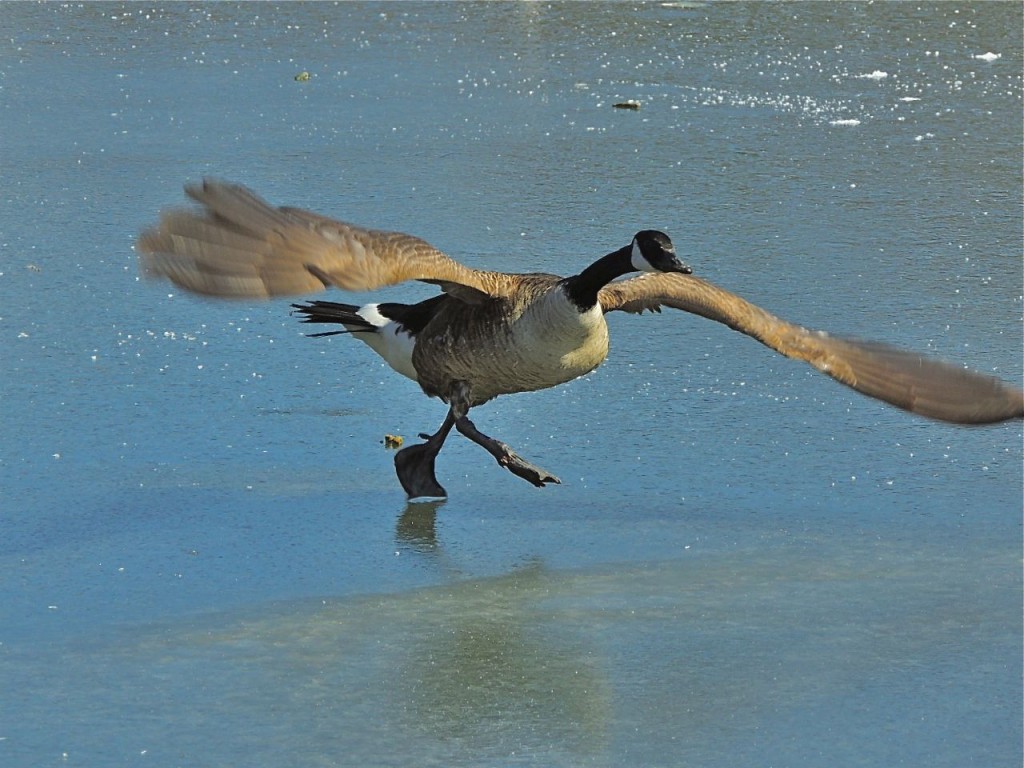
Leaving this rather sordid neck of the woods I went to the edge of our industrial harbour to where I’d been told that a preserved WWII destroyer had been kept ice-free by a submerged bubble system and where consequently birds were hanging around. It wasn’t as good as I’d hoped but I was able to get a good look at this rather handsome Greater Scaup. Scaup, Lesser and Greater, are infernally difficult to tell apart, but I think the overall roundness of this bird’s head and the gleaming white flanks point to a Greater Scaup; the Lesser’s head profile has a bit of a peak at its forehead and is often (but not always) rather muddier in its flank colour.
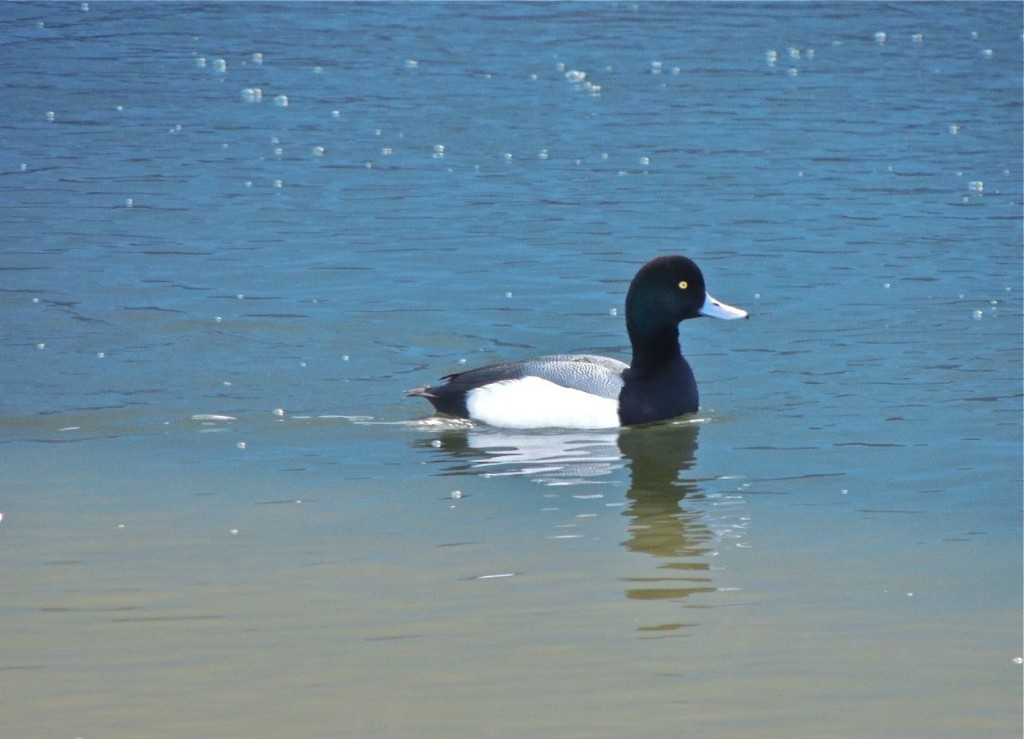
I was of half a mind to view the scaup as my bird of the day; it is certainly rather eye catching, but it was seeing the American Wigeon surviving in its hard-scrabble existence among all those pugilistic Mallards and heavyweight Canada Geese, that stole my heart.
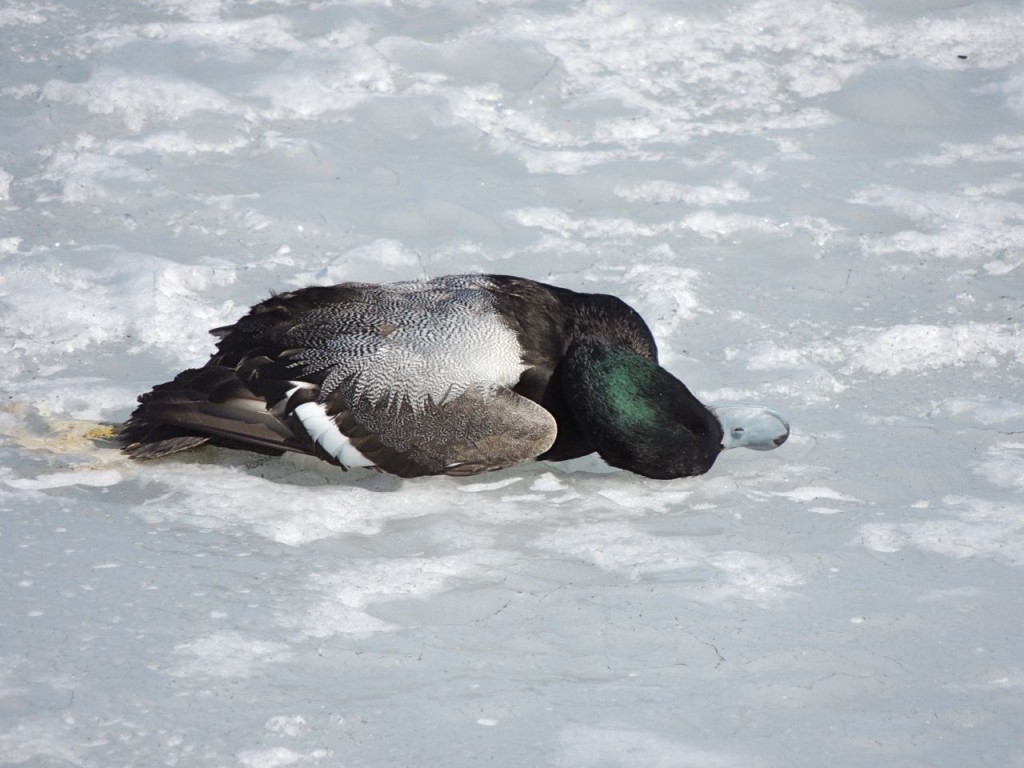
This post contains photos in galleries visible only on the website, not if you’re reading this as an email.
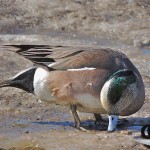
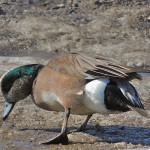
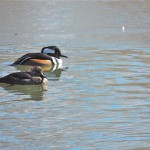
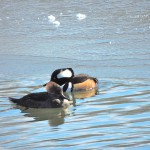
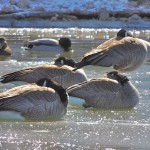
How was the cheese?